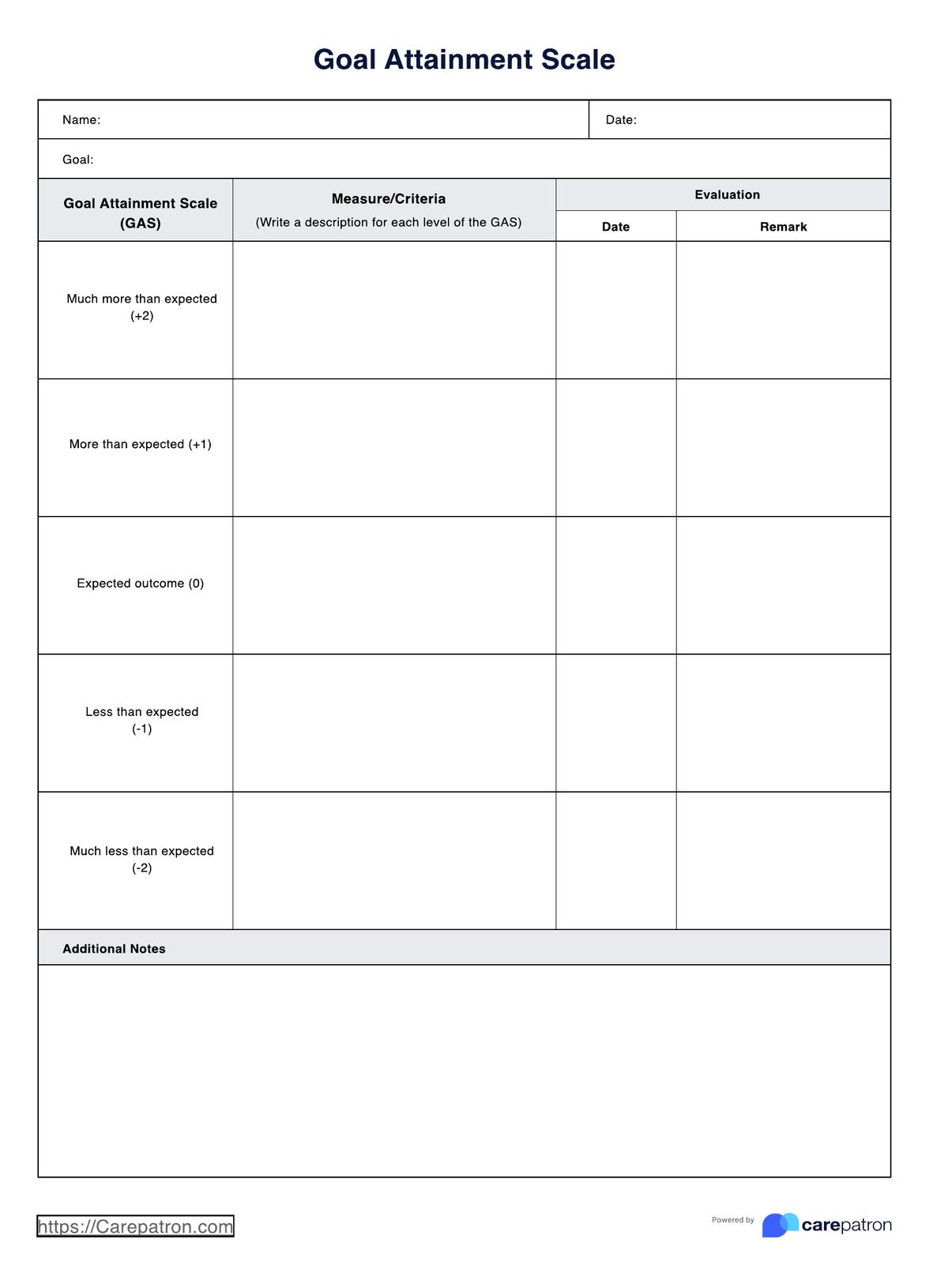Kiresuk and Sherman developed the GAS in 1968 to help clinicians assess a patient's progress in mental health services.

Goal Attainment Scale (GAS)
The Goal Attainment Scale (GAS) is a simple and effective tool to measure progress towards any goal. Learn more about GAS and download the free template and example.
Goal Attainment Scale (GAS) Template
Commonly asked questions
The GAS measures the progress of a patient toward specific goals. It allows clinicians to objectively assess how effective treatments are and adjust interventions if necessary.
You can administer the GAS in various ways, such as through interviews, observation, or physician-reported measures. You and your patient should work together to set specific objectives, and each goal should be rated based on the patient's progress.
EHR and practice management software
Get started for free
*No credit card required
Free
$0/usd
Unlimited clients
Telehealth
1GB of storage
Client portal text
Automated billing and online payments











